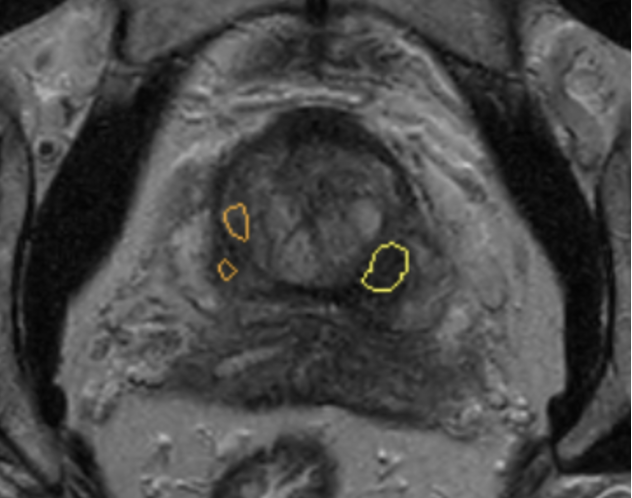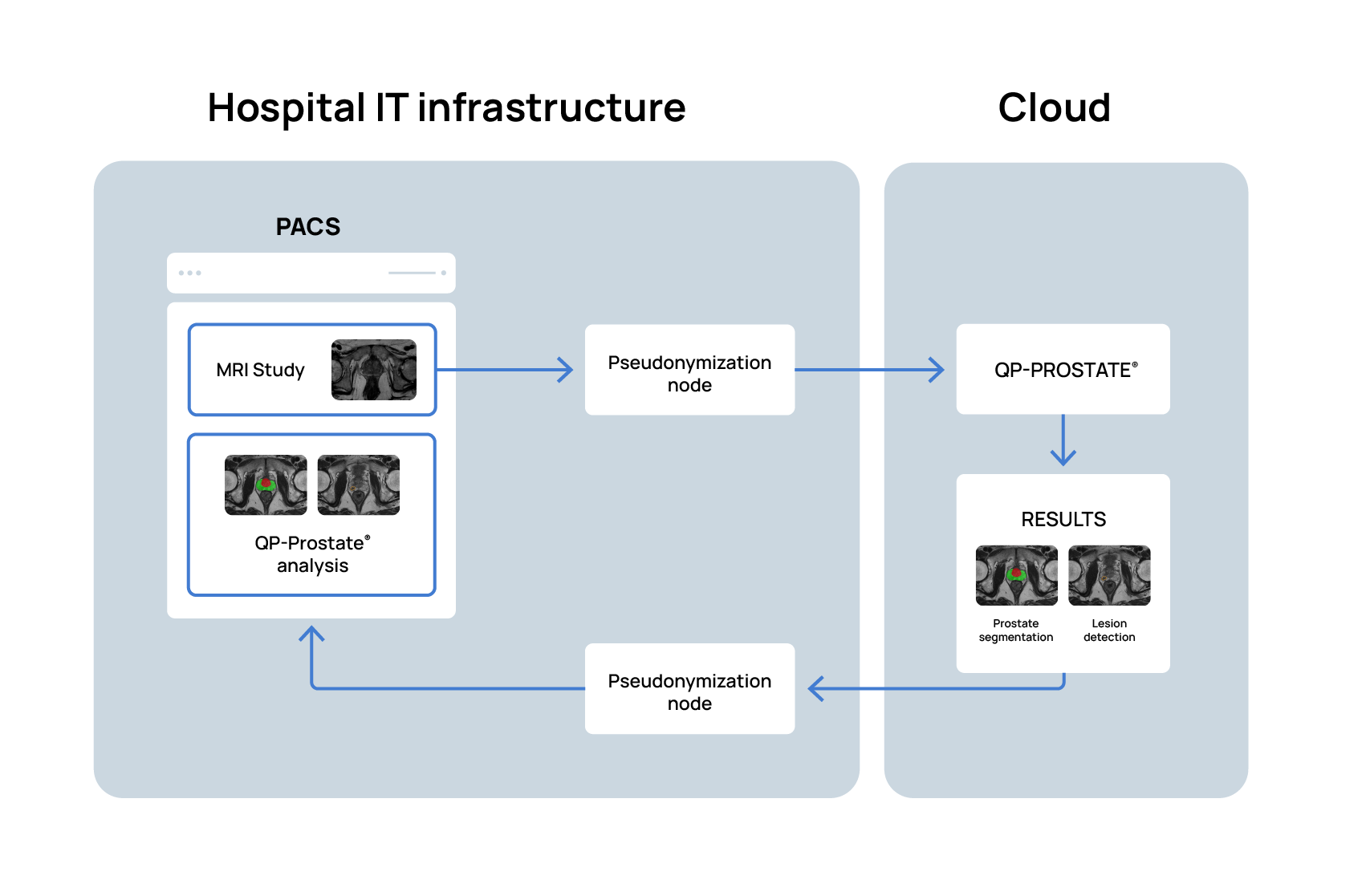AI-powered lesion detection in prostate cancer: a paradigm shift
Prostate cancer stands as a significant health concern worldwide, ranking as the second most common cancer among men. Alarmingly, one in eight men will develop prostate cancer in their lifetime. Early detection of suspicious lesions on prostate is crucial to ensure effective treatment and improved survival rates.
If caught early, prostate cancer is treatable, and has a high likelihood of survival. Unfortunately, not all patients are diagnosed at an early stage, having to undergo more aggressive treatments with poorer outcomes and higher costs to the healthcare ecosystem.
Its prevalence underscores the importance of continual advancements in diagnostic tools and methodologies to enhance early detection and improve patient outcomes, particularly in the use of AI prostate MRI for identifying suspicious lesions on prostate.
This blog post delves into the transformative role of artificial intelligence (AI) in revolutionizing the detection of clinically significant prostate cancer (csPCa) using prostate MRI as a key input.
The patient journey
The path to a definitive prostate cancer diagnosis often starts with self-reported symptoms. When a patient reports difficulty urinating or other symptoms that may indicate the presence of cancer, their General Practitioner orders a blood test to measure the Prostate Specific Antigen (PSA) levels.
Traditionally, a high PSA level was followed by a prostate biopsy, an invasive procedure to extract a small part of the prostate tissue to examine for the presence of cancer. However, most patients had no cancer, resulting in many unnecessary biopsies. Conversely, some men with prostate cancer do not show elevated PSA levels.
This situation led to the introduction of an MRI scan prior to a biopsy. Prostate MRI not only enhances the detection of suspicious lesions on prostate but also reduces unnecessary biopsies, making it a game-changer in prostate cancer management.
Prostate MRI: a game-changer in detection
The introduction of prostate MRI before a biopsy has marked a pivotal shift in prostate cancer diagnosis by offering a non-invasive method to identify suspicious lesions on prostate. This advanced imaging technique has proven instrumental in enhancing the detection of csPCa while simultaneously reducing the number of unnecessary biopsies.
However, the surge in demand for prostate MRI has revealed a bottleneck – a shortage of radiologists capable of promptly and accurately reporting on these examinations. Prostate MRI requires radiologists to analyze multiple imaging sequences simultaneously, which increases reporting time and introduces a steep learning curve for these specialists.
Addressing the radiologist shortage with AI
The shortage of radiologists poses a challenge to timely and accurate reporting of prostate MRI results. Prostate MRI is characterized by its complexity, having to combining different sequences simultaneously to identify suspicious lesions. This results in longer than average reporting time and a steep learning curve for abdominal radiologists to assess prostate MRI confidently. Due to different levels of experience, inter-reader variability is high, resulting in variations in patient management outcomes depending on the reporting radiologist.
This is where AI-powered lesion detection emerges as a critical solution. By automating the identification of lesions suspicious of csPCa, AI algorithms can assist radiologists in their diagnostic tasks, enabling them to work more efficiently and minimizing the risk of oversight.
QP-Prostate®: a paradigm shift in prostate cancer management
Quibim’s flagship product, QP-Prostate®, is the result of years of research in computer vision. By using biopsy results as ground truth for training and validation, QP-Prostate® identifies and highlights suspicious lesions on prostate, enhancing radiologists’ accuracy and efficiency.
The software provides radiologists with a visual representation of the lesion, and a degree of certainty on the software’s prediction when determining if a lesion could be csPCa.

QP-Prostate®’s results are integrated with the radiologists PACS to ensure minimal disruption to their clinical workflow.
By providing radiologists with an objective estimation, QP-Prostate® aims to improve their diagnostic accuracy (reducing the number of missed cancers, as well as reducing the number of unnecessary biopsies), as well as their reporting time.
The application of AI in lesion detection addresses another critical issue – the variability in interpretation among radiologists. Disparities in expertise and experience can lead to inconsistencies in diagnosis. AI serves is an objective and standardized tool, mitigating disparities and promoting uniformity in csPCa detection.

The future of AI in prostate cancer management
The integration of AI into prostate cancer management is poised to revolutionize the field. Looking forward, AI-powered tools will move beyond lesion detection at a given point in time and play an increasingly pivotal role in personalized treatment plans, providing more precise insights into disease progression and optimizing therapeutic strategies.
AI algorithms, continuously learning from vast datasets, have the potential to tailor treatment plans based on individual patient profiles. This personalized approach will ensure patients receive interventions that are effective and also minimize potential side effects.
AI’s ability to analyze longitudinal data can facilitate more effective monitoring of patient’s’ responses to treatment. By identifying subtle changes in prostate lesions over time, AI can ensure timely intervention and adjustment of treatment strategies, further improving patient outcomes.

